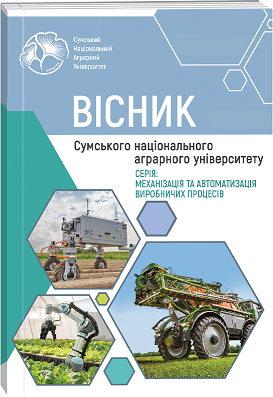METHODOLOGICAL AND ECONOMIC APPROACHES REGARDING THE DETERMINATION OF FUEL CONSUMPTION OF VEHICLES WHEN TRANSPORTING GRAIN FROM GRAIN HARVESTERS
Abstract
The proposed article presents methodological and economic approaches to determine the main technical and operational indicators of trucks for transporting grain from the combine when harvesting winter wheat, which makes it possible to determine directly the effectiveness of their use in production conditions.
Formulation of the problem. The problem is that in the absence of standards in the economy for indicators of the use of vehicles in the transportation of grain from the combine, these indicators can be determined analytically and used to pay performers and write off fuel.
The problem is that in the absence of standards in the economy for indicators of the use of vehicles in the transportation of grain from the combine, these indicators can be determined analytically and used to pay performers and write off fuel.
Analysis of recent research and publications. From textbooks and other literature sources on machine use in crop production, it is known how to determine the indicators of the use of road transport with their known technical characteristics and conditions of their use in the harvesting of various cereals. However, we have not found any analytical studies on how these indicators are actually determined in specific conditions.
Formulation of the goals of the article and the purpose of research. Provide methodological and economic approaches to determine the main technical and operational indicators, and in particular the productivity and fuel consumption of trucks when trans-porting grain from combine harvesters when harvesting wheat, which will allow them to better organize their work in production condi-tions, and this material can be useful in the study of transport processes in agriculture.
Tables 2 show that the engine load is greatest (69%) when moving the car - a dump truck on the field with a fully loaded body. However, in this situation, this figure is far from the norm.
When driving a car without a load (idling) fuel consumption per 100 km is equal to 15.8 kg. A fully loaded car consumes 27.1 kg per 100 km, which fits into the range of standard fuel consumption in the summer season.
Consumption of diesel fuel per 1 ton of transported wheat grain is 120 g.
References
2. Поливаний А.Д., Мікуліна М.О. Логістична концепція транспортних підприємств// Матеріали Всеукраїнської студент-ської науковій конференції (11- 15 листопада 2019 р.).– Суми, 2019. С.270
3. Мікуліна М. О. Барабаш Г.І., Поливаний А.Д. Вплив схем розвантаження комбайна на показники використання тран-спортного засобу [Електронний ресурс]. The 5th International scientific and practical conference «Science and education: problems, prospects and innovations», (February 4-6, 2021). – Kyoto : CPN Publishing Group, 2021. – Р. 691-699.
4. Мікуліна М.О. Оцінка тракторів з різним типом рушіїв [Електронний ресурс]. Збірник тез доповідей по матеріалах XXI Міжнародної наукової конференції „Сучасні проблеми землеробської механіки”. Харків: ХНТУСГ, 2020. 370 с.. С.130 – 131.

 ISSN
ISSN  ISSN
ISSN 



